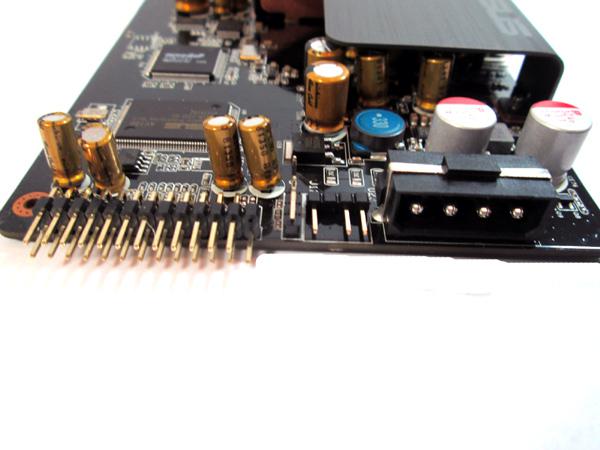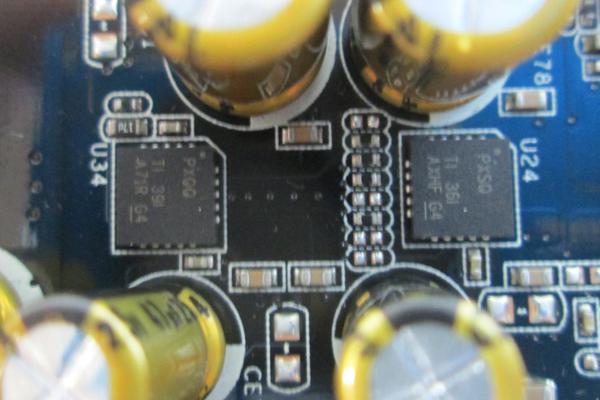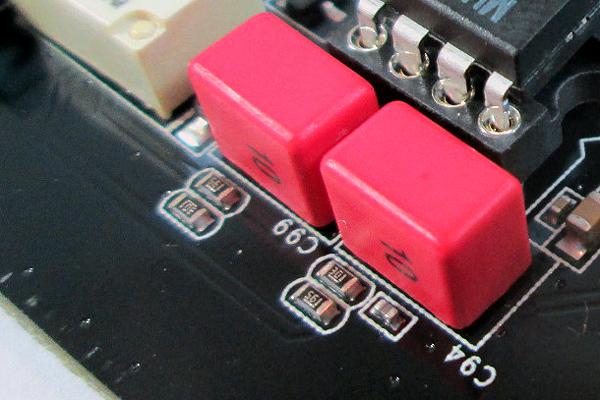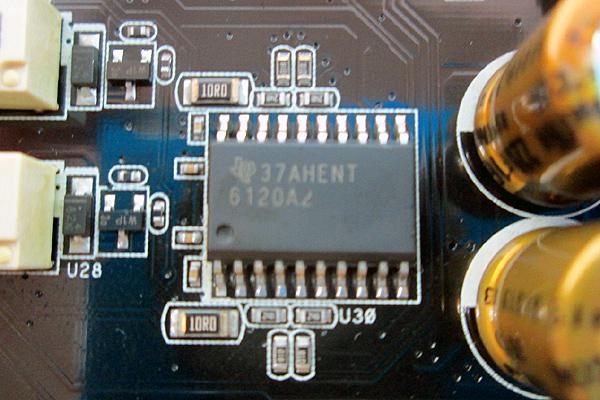Electronics Overview
Clocking
All digital circuits require a clocking source but not all clock sources are created equal. Some clocks can be very sloppy introducing discrete timing errors which can cause distortion and artifacts in the internal signals and in turn degrades the final output sound quality. We are pleased to see that the STX II utilizes a premium grade temperature compensated crystal oscillator (TCXO) for its clocking source which hopefully can keep the discrete timing errors to a minimum.
Power Design
In high end audio circuit design, power quality and cleanliness is of paramount importance. If dirty power signals are allowed in the circuit they will permeate the output signal quality and degrade it to some degree. The STX II draws power from the system PSU through a Molex connector on the card, instead of using the bus. This design consideration is an attempt to supply the circuitry with the cleanest power possible given the available options. The card also utilizes a copper “fence” on the card that is attached to the ground plane. This fence acts as a Faraday cage, sending any stray noise from the power section straight to ground and away from the sensitive analog conversion and output sections.
Power Regulators
The card utilizes high quality, low noise, Low Drop Out, linear Regulators. This design consideration is not seen on earlier incarnations of the Essence Soundcards. The card uses both Postive and negative 12Volt rails from the PSU. These rails will generally be quite acceptable in terms of noise and ripple but the designers decided to further clean up the power.
- TPA 7A4700 – Handles Positive regulation
This chip offers Low Noise regulation of 4 µVRMS (10 Hz, 100 kHz) and provides excellent supply ripple rejection of 82 dB (100 Hz) and ≥ 55 dB (10 Hz, 10 MHz).
7A4700 Specification Sheet “http://www.ti.com/product/tps7a4700?DCMP=pwr_lp_ldo_lownoise_eu&HQS=tps7a4700-pr-eu”
- TPA 7A3301 – Handles Negative regulation
This chip is the brother to the above offering Low Noise negative regulation of 16 µVRMS (10 Hz to 100 kHz) and ripple rejection ratings of 72 dB (10 kHz).
7A3301 Specifications Sheet “http://www.ti.com/product/TPS7A3301?keyMatch=TPS7A3301&tisearch=Search-EN”
Capacitors
The capacitors on this card work as filters, cleaning signals and rejecting noise. The STX II uses high grade Nichicon caps throughout the card, with the main Left and right channel LPF/Buffer section using premium Wima Caps.
Head Amp Chip – TI TPA6210A2
This amplifier chip has been utilized on designs from many manufactures that require a powered Headphone output. They are a staple chip on the STX series of soundcards and it’s inclusion in the design is no surprise.
Using the drive software this chip offer selectable gain ranges for different types of headsets that require varied impedance ranges. The gain ranges are:
- IEM for 16 ~32ohm Headsets
- Normal Gain <64 Ohom Headsets
- High Gain for 64 ~300ohms Headsets
- Extra High Gain for 300 ~600Ohm Headsets
For those that require a powered headphone output this chip should do the job nicely.






